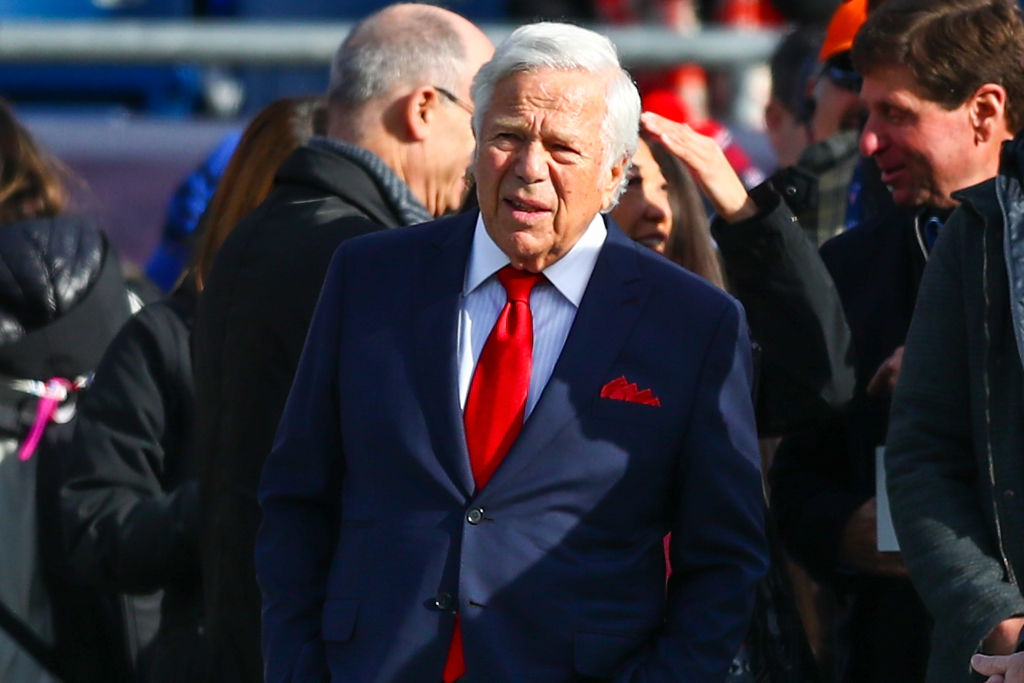NFL
Robert Kraft Broke Every Money Rule He Had to Buy the New England Patriots

Robert Kraft meticulously prepared for the biggest business move of his life and then worked that plan in the same fashion Bill Belichick and Tom Brady might orchestrate the New England Patriots’ two-minute offense with the game on the line.
And then with the goal line in sight, Kraft made the decision that he says “probably broke every one of my personal financial rules.”
Robert Kraft always wanted to but the New England Patriots
Robert Kraft can recall being 30 years old and sitting in the cheap seats of dismal Sullivan Stadium with his sons while watching the even more dismal New England Patriots. Even then he dreamed of owning the team that he grew up rooting for.
Some 23 years later, Kraft achieved that life-long goal by paying $172 million to buy the NFL franchise. The path to the purchase was lengthy but modeled in a similar fashion to the way that he built his business empire.
“I hire good people I can trust. No superstars. No Lone Rangers. If you keep the turkeys out of your life, then good things can happen.”
Robert Kraft
That mindset may have been instilled while earning a business degree from Harvard in 1965. He acquired half of his father-in-law’s packaging company in 1968 and bought the rest of the business shortly afterward but quickly realized the risk that the volatility in the paper industry posed.
That led to starting another company that could handle all the pre-production process, assuring stability for the Kraft Group’s packaging business, which became a $1 billion operation by the time Kraft was ready to buy the Patriots.
A lesson learned and put to use
Robert Kraft bought a World Team Tennis franchise in 1975. The Boston Lobsters played their matches at Boston University, which kept the revenue from parking and concessions. Kraft quickly understood the dent that the arrangement put into the balance sheet and resolved to not let it happen again if he ever owned the New England Patriots.
That plan began taking shape in 1985 when Kraft nailed down a 10-year option to buy 300 acres of land around the old Foxborough, Massachusetts, stadium. The Patriots were put up for sale the following year but Victor Kiam submitted the winning $87 million bid to Kraft’s disappointment.
Former Patriots owner Charles Sullivan had to sell the stadium in 1988 after declaring bankruptcy, and Kraft soon had the second part of the puzzle. With the help of a partner, be bought the stadium for $25 million and held onto the iron-clad lease that required the Patriots to play there until 2001. As a bonus, the stadium generated enough money to pay for the option on the 300 acres.
One more hurdle for Robert Kraft to clear
Victor Kiam ran into financial difficulties and sold the New England Patriots to a businessman who wanted to move the team to St. Louis or sell it, but Robert Kraft held the leverage of the lease and traveled to Missouri in 1994 to negotiate with James Busch Orthwein.
Advisers suggested to Kraft that he offer $115 million. By the time negotiations were over, he agreed to pay $172 million – hence his remark about breaking his personal financial rules. The price set a record for a sports franchise but looked like a bargain by the time Daniel Snyder paid $800 million for the Washington Redskins in 1999.
There was just one move left to make: The following year, Kraft paid $18 million to exercise his long-standing option on the 300 acres adjacent to the stadium to set the stage for building 68,000-seat Gillette Stadium.











